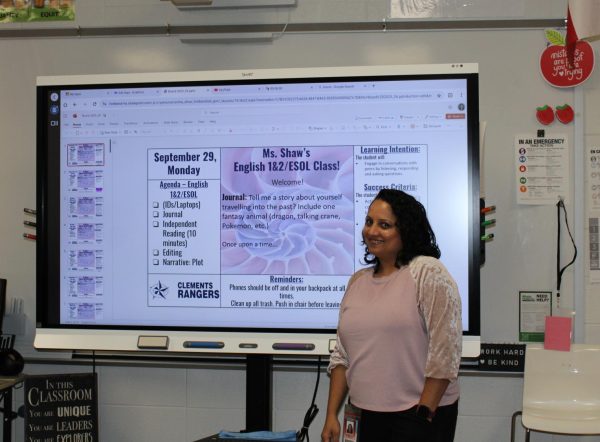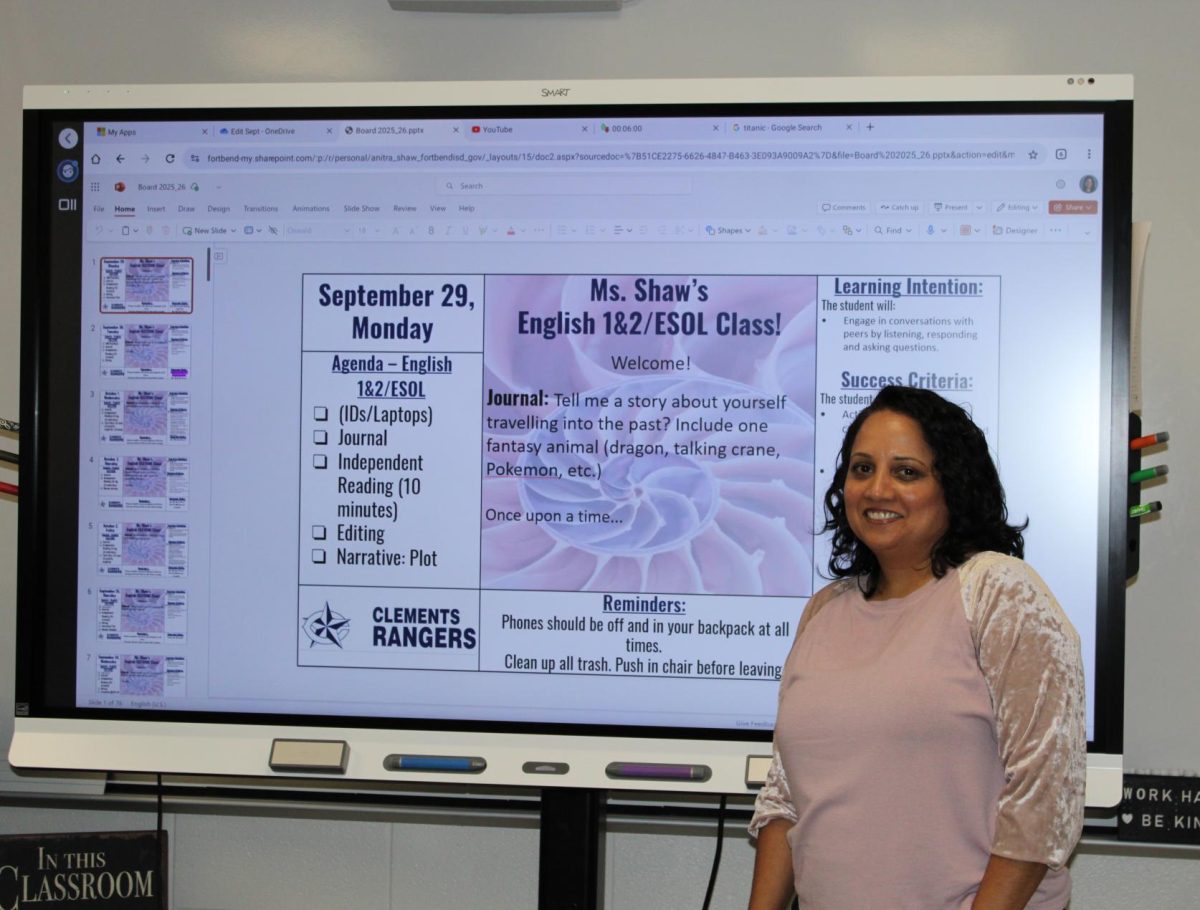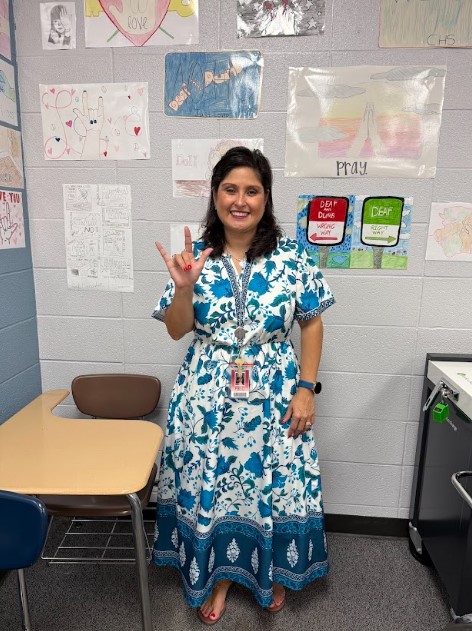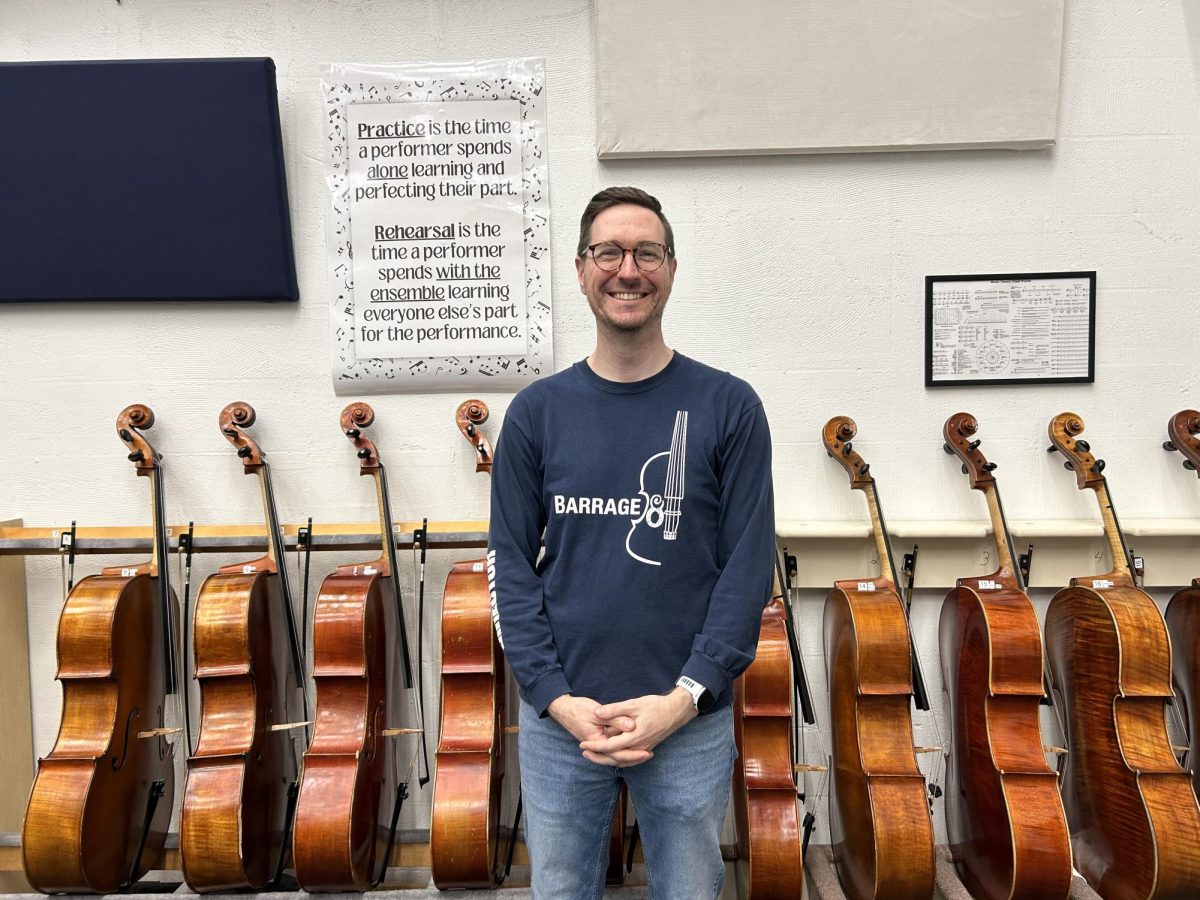Her parents arrived in the U.S. in the 1960s with just $50 in their pockets chasing the American Dream. Today, English as a second language (ESL) teacher Anitra Shaw uses their story to inspire her students to chase their dreams.
Growing up in a small town in Ohio, Shaw’s childhood looked different from those around her. Her parents had immigrated to the United States just a few years earlier, and although they spoke English, they faced many challenges.
“We didn’t have access to international foods or other families from our background,” Shaw said. “And because there were no cell phones or internet, my parents only connected with family overseas during holidays through expensive long distance calls.”
That sense of distance and resilience shaped her view of the world. It also inspired her career path. Shaw said hearing her parents’ stories about starting over motivated her to help others who were navigating the same struggles.
“While my family was fortunate to already speak English, I saw so many other immigrant families who didn’t,” Shaw said. “It was hard watching how much that limited their opportunities.”
Shaw then decided she wanted to become a teacher who could be a bridge, someone who not only taught English but also made students feel seen and supported. An old student of hers, Melani Llano, who was in ESL last year, explained that Shaw breaks things down in ways that make sense and encourages her to speak up without being afraid of mistakes.
“Honestly, it helped me a lot because she makes English feel less scary,” Llano said. “She’s inspiring, not just in English but in life.”
Shaw’s teaching style is shaped by both her personal background and her professional training. She doesn’t just rely on textbooks. Instead, she blends in conversations, cultural references, and real world situations to make lessons meaningful.
“Each place showed me that every learner brings their own history and challenges,” Shaw said. “Teaching in different countries helped me see that patience and flexibility are just as important as the lessons themselves.”
She taught abroad for a year in Turkey, interned in Bosnia and worked with adult learners in Chicago, each experience giving a deeper understanding of how people learn in different environments.
“Seeing how people learn in different ways and how conversations can teach better than a workbook,” Shaw said. “That all shaped how I teach today.”
Shaw believes that language learning is never one size fits all. Some students need visuals, others need repetition, and still others learn best by speaking and practicing with friends. Shaw explained that part of her job is figuring out how each student learns and then adjusting her methods to match. That adaptability, Shaw said, is key to making students feel successful.
“Every student learns differently, so my job is to meet where they are,” Shaw said. “When I adjust my methods to fit their needs, they start to see success and build their confidence.”
Students notice the difference. Junior Nilofar Ahmadi said Shaw’s class helps her feel more confident using English outside of school, especially when talking to people in public. She explains that Shaw often pushes her to practice speaking, even when she’s nervous, because she knows it will pay off later.
“Before her class, I was scared to talk to anyone,” Ahmadi said. “Now I can order food at restaurants or ask questions without feeling embarrassed.”
When asked about her proudest moments, Shaw didn’t hesitate to bring up her students. Last year, a group of Spanish-speaking girls in her class stood out to her.
“A couple of them came in as 11th graders,” Shaw said. “They built such strong friendships, supported each other and worked so hard not just in my class but in all of their classes. Seeing two of them graduate last year was such a big deal. Their excitement, and the excitement of their friends, was unforgettable.”
Shaw explained that these moments are what keep her going as a teacher. Graduation days, she said, are not just about the students, it’s about seeing years of effort, growth, and resilience pay off. But like all teachers, Shaw also faces challenges. Some students resist learning English or struggle with behaviors that affect their grade.
“I overcome it by talking with them directly, showing them what needs to change and then recognizing their successes when they do improve,” Shaw said.
Her students notice that effort. Junior Zichun Zeng explained that in Shaw’s class, she rarely feels insecure even though English is not her first language. She said Shaw reminds her that doing her best is enough and that improvement happens step by step.
“She’s reliable.” Zeng said. “Someone truly worthy of trust.”
Outside of school, Shaw enjoys traveling, hiking and exploring new restaurants. She loves connecting with new people and learning about different cultures, governments and traditions. Food, Shaw explained, is one of her favorite ways to explore a culture.
“I didn’t try it until ten years ago, but now one of my favorite dishes is baleadas,” Shaw said. “It’s a Honduran food with tortillas, leafy beans, and crema.”
Her love of travel connects back to her teaching. Shaw explained that whenever she travels, she pays attention to how people communicate across cultures. She said those lessons remind her students that learning English is not about losing their identity but gaining another tool to connect with the world.
“Traveling always reminds me that communication is more than just words,” Shaw said. “It’s about listening, understanding and finding common-ground [in] lessons I bring back to my classroom.”
Shaw’s teaching journey has also taken her to many classrooms. Now in her fifth year at Clements, Shaw previously taught at Pearland High School for two years, Pearland Junior High for one year and in the Alief school district for four years.
“Teaching adults was a completely different experience,” Shaw said. “They came to class after long days at work, but they were determined to learn. Their perseverance pushed me to be a better teacher.”
When asked what advice she would give her students or her younger self, Shaw mentioned not being afraid of making mistakes.
“Mistakes are proof that you’re trying, and every step forward is progress,” Shaw said. “I would also remind my younger self to be patient and trust the process.”
Her students said they often hear that same advice in the classroom.
“She always tells us not to give up, even when English feels hard,” Ahmadi said. “She believes in us more than we believe in ourself, sometimes.”
All of Shaw’s experience, both personal and professional, come together in her teaching philosophy.
“My goal is to educate students to the best of my ability, help them become self-sufficient, and guide them through cultural and academic differences,” Shaw said.
Her students say she lives that philosophy every day. Ahmadi explained that she’s learned not only English, but also how to be more confident and respectful. Llano added that Shaw constantly reminds them that learning takes time and that mistakes are part of the process.

From her small town childhood in Ohio to classrooms around the world, Shaw’s story reflects resilience, empathy, and dedication. For her, teaching ESL is more than just a subject, it’s a mission. For her students, it’s proof that a teacher’s story can change the way they see their own future. But also, students impact teachers, whether they inspire them, teach them new things, or remind them why they started teaching in the first place.
“Every challenge pushes me to grow,” Shaw said. “It reminds me that teaching is about listening, adapting and believing in the potential of every student.”








